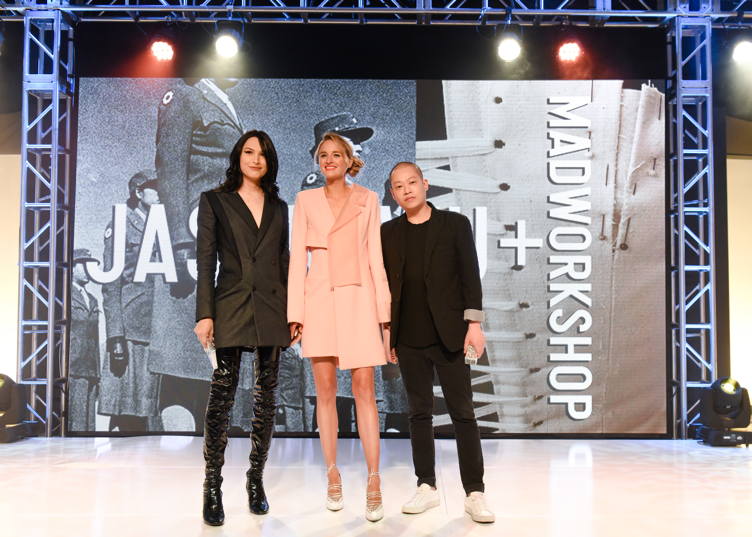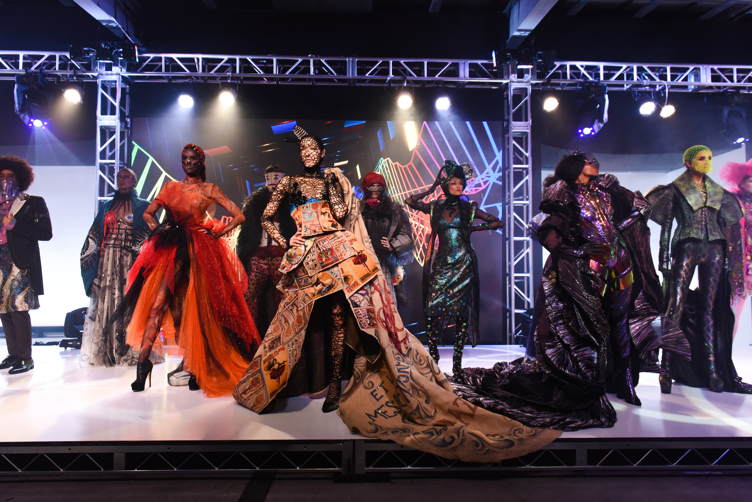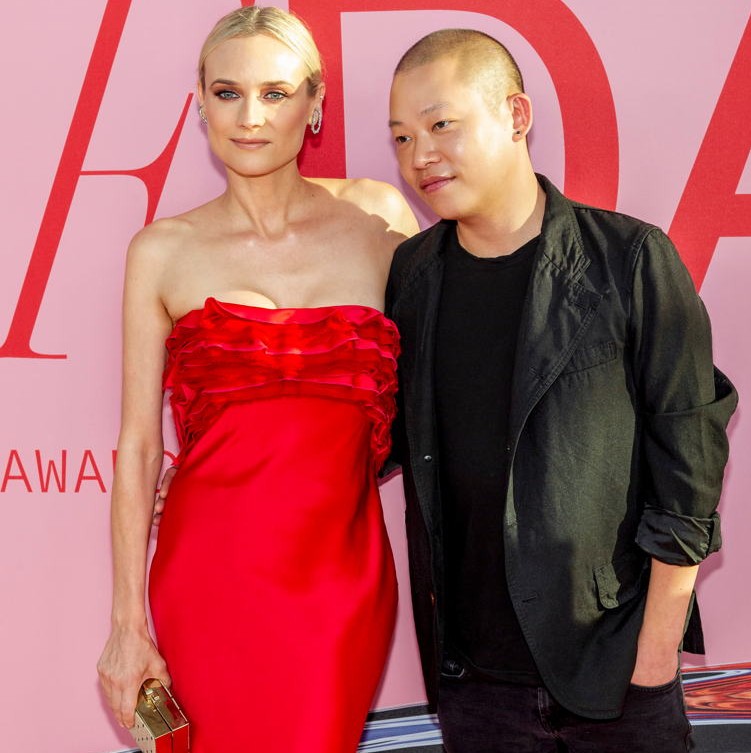News & Events
Jason Wu Featured in Haute Living
Why Jason Wu Decided To Play Fashion Mentor For LA College Students
Source: Haute Living
For its Centennial Year, Los Angeles’ Otis College of Art and Design—which has one of the top fashion design programs in the nation (and has produced designers Claire Pettibone, Rick Owens, Red Carter, Chris Chang and Rod Beattie)—went big for its annual fashion show, celebrating a year-long collaboration between its students and a wide array of creative talent from some of the world’s best known fashion brands, stylists and designers. Famed designer Jason Wu, alongside celebrity stylist Bao Tranchi; Jennifer Tong, design director for Adidas / agron, inc.; Debbie Sabet, Patrik Ervell and Arthur Thammavong, designers for Vince; creative talent from Ralph Lauren, celebrity stylist B. Akerlund; and Eduardo Castro, costume designer for ABC’s “Once Upon a Time” were those mentors. Wu’s collaboration with Mary and David Martin’s MADWORKSHOP was particularly noteworthy, in that it partnered with the Costume and Textiles Department at the Los Angeles County Museum of Art (LACMA), offering students unique access to reference a vast historical archive to aid in Wu’s design direction, which was showcased in a professional level runway show that included over 125 unique student designs. We caught up with Wu to discuss how it felt to mentor the next generation of designers, and why it was so personally important for him to take a year out of his truly hectic schedule to do so.

Photo Credit:Owen Kolasinski/BFA.com, Courtesy of Otis College of Art and Design
Could you explain what your design assignment was for Otis College students and what you hoped they would get out of it?
My assignment was to mentor the students in their final term, act as their sounding board and guide them through finishing their garment based on the theme and inspiration for the season, which was workwear uniforms. This experience has reinforced what my mother once told me – that you should never stop learning – valuable advice I think everyone can take to heart.
I’ve read that you considered a look for women inspired by ’50s couture with a visual nod to the uniform as an overall sense of equality and liberation. Could you explain what this means in terms equality and our current movement?
The 40s and 50s are not only the ‘golden age’ of couture, the fashion was also highly influenced by politics, from uniforms to high fashion. I feel there are certain parallels to where we are today, and I thought it would be an especially relevant topic for the students, from both the design and cultural aspects. Fashion is a direct reflection of what’s going on in the world. Right now, there is a lot of conversation about defining the role of women today, especially in the workplace, and it’s interesting to delve into it. Perhaps the new uniform is about not having one at all.
How, perhaps, should or could fashion nod more towards gender equality as a whole?
Women today have the power to choose how to project their image, either embracing or rejecting traditionalism, but really, it’s about using fashion as a tool for empowerment.

Photo Credit:Owen Kolasinski/BFA.com, Courtesy of Otis College of Art and Desig
What makes Otis students unique in terms of other young designers or students you’ve engaged with?
It has been inspiring for me to watch and nurture a new generation of designers as they develop their own vision and prepare what they want to share with the world after graduation. Through this process, I have been fortunate enough to watch these students evolve and grow through their work with this program. I thought the Otis students displayed an incredible amount of talent.
What are the overall aims of collaborating with institutions like LACMA and MADWORKSHOP, which supported your mentorship?
When I first toured Otis through the introduction of my dear friends David and Mary Martin, I was super impressed with the talent of the students. I wanted to bring aspects of New York fashion to the students and set them up to succeed professionally in the future.
What does the term “Limitless” mean to you on a personal level, and as pertaining to fashion?
Limitless to me means that I have the freedom to create on my own terms, march to the beat of my own drums.

Photo Credit: Ovidiu Hrubaru / Shutterstock.com
Which of the famous women you dress truly embodies empowerment and why? What look are you dying to create for this woman?
Diane Kruger. She has such confidence and poise which I think stems from the fact that she is passionate and genuine.
What is one sartorial fad you wish would go away?
I think it is important for fads to rise and fall and for design to evolve, but with that said, I think one thing I could see a bit less of is overpriced street wear. I personally love dressing comfortably in a hoodie, tee and jeans, but I do think the tide may be turning, and there is a burgeoning desire to feel more put together.
What is one sartorial fad you plan on bringing back… and why?
I have never been overly drawn to fads or anything overly trendy. Sure, I can be inspired by what I see around me, but above all, I consider myself a designer that blends femininity with modernity. It is important for me that my designs feel timeless.






